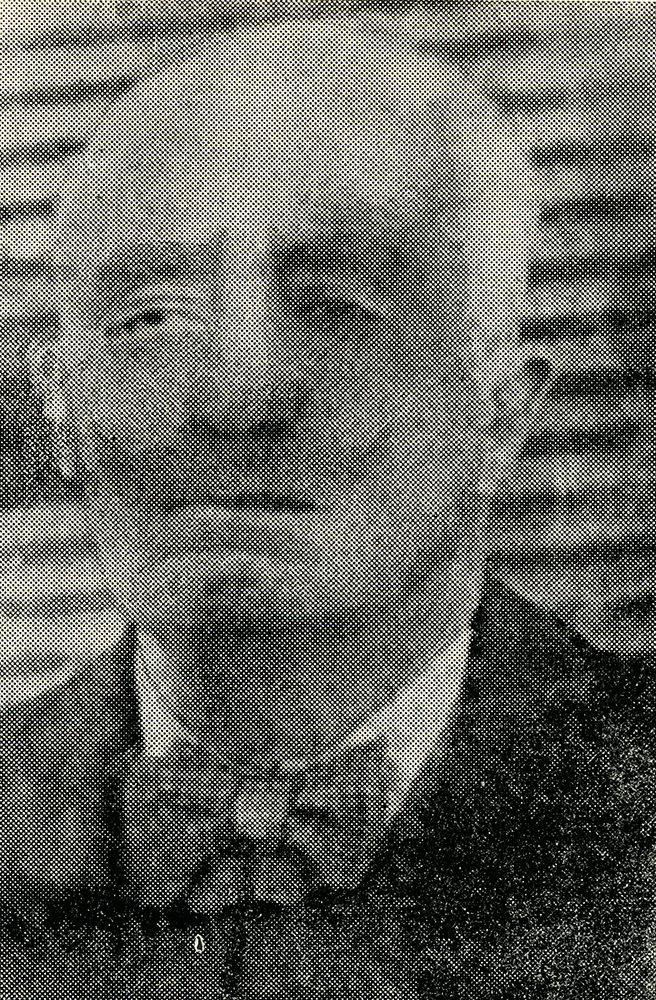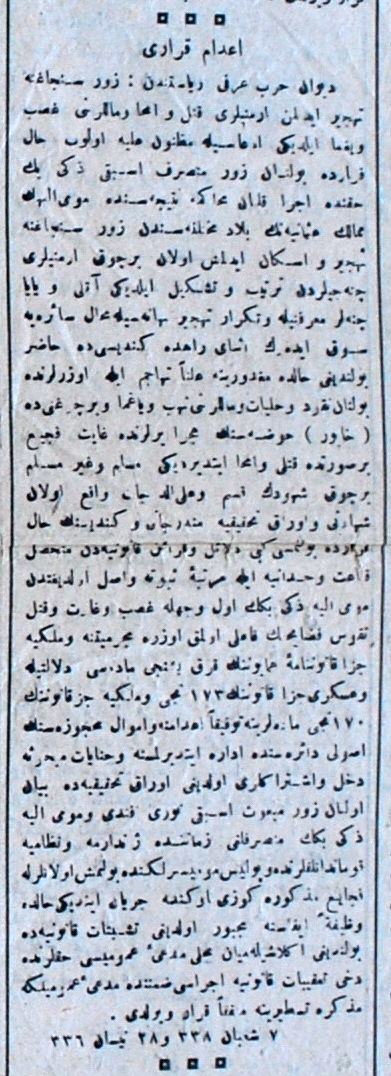28.04.2020
 Salih Zeki Bey
Salih Zeki Bey
100 years ago on this day, 28 April 1920, the Special Military Tribunal in Constantinople sentenced to death in absentia Salih Zeki Bey, the former governor of Der Zor and one of the main perpetrators of the Armenian Genocide, responsible for the massacres in Der Zor.
On 26 April 1916 Zeki was appointed as a governor of Der Zor. Shortly after taking office, he sent tens of thousands of exiled Armenians gathered in Der Zor and surrounding villages and towns to the depths of the desert and who were indiscriminately massacred by the groups formed and led by him. Approximately 192,750 exiled Armenians, who had arrived from Western Armenia, Cilicia, Asia Minor and other regions of the empire, were killed in the massacres of Der Zor.
After the armistice in the aftermath of World War One on 8 March 1919 by the decree of Sultan Z. Wahiduddin the Special Military Tribunal was established to prosecute those responsible for the deportations and massacres of Armenians and the criminals who were responsible for Turkey’s entry into the war. Several months before this decision, the new Turkish government had already decided to try the perpetrators of the Armenian Genocide, and to this end fact-finding committees were set up on 16 December 1918 to collect documents for the trials and submit them to the court.
During the trials, which lasted till 1921, various members of the Ittihad Central Committee were tried in separate hearings - local secretaries of the party, high-ranking government officials - prime ministers, ministers, governors, heads of the Special Organization (Teshkilat Mahsusa) and other state officials.
The court sentenced 20 criminals to death, including Talaat, Enver and Cemal Pasha, Behaeddin Shakir, Dr. Nazim, Jemal Azmi, Salih Zeki and others and many others were given prison sentences. Three criminals were executed by hanging while others who were sentenced to death had fled the country or had been in hiding.
100 years ago, on 28 April 1920, the Military Tribunal also sentenced to death in absentia Salih Zeki Bey, the former governor of Der Zor.
Below is an excerpt from the 890th issue of “Vakit” (“وقت” (Time), an Ottoman-Turkish newspaper, published on 2 May 1920, presenting the death order of Salih Zeki (from the archive of an author).
Here is the translation:
“Death Sentence”
As a result of a trial of Zeki Bey, the former governor of Der Zor, who is being accused of massacring and destructing the exiled Armenians in Der Zor province and stealing their property, it has been comfirmed that, Zeki through the chete (bandit) horse riding and pedestrian groups, has exiled the Armenians, who had arrived in Der Zor and settled down there from different parts of the Ottoman Empire, to another place and in the moment of their rest, in his presence, publicly attacked the victims, stole their money, their valuables and property, and brutally killed some of them in the deserted areas of the Khabur Valley, which was confirmed by numerous Muslim and non-Muslim witnesses…”
Many survivors who had passed through Der Zor wrote about Zeki and his crimes. Let's give only the testimony of Yervand Odian: “The most dreadful among the great criminals, the most horrible among those who defile the human race”.
Despite all this and the above-mentioned verdict of the Military Court, Zeki remained free and died a natural death in 1940 in Moscow.
Find more about Zeki Bey in the Turkish volume by Arsen Avagyan “Karanlıkta kalmış bir eylemci: Ittihatçı komünist Salih Zeki (Kuşarkov)” (A Benighted Activist: Unionist, Communist Salih Zeki (Kuşarkov)) , published in 2020 (118 pages), and the author’s two publications “Aram Antonyan’s unpublished Notes on the Massacres of Der Zor,” Haykazian Armenological Journal (2015):685-724; and “Aram Antonyan's testimony about the crimes committed by Der Zor Governor Saleh Zek Bey in Everk,” Joural for Genocide Studies 6 no 1 (2018): 61-70.
Mihran Minassian
Head of the Department of the Armenian Genocide Memoires, Documents and Press, Armenian Genocide Museum-Institute Foundation.
Research fields – sources of the Armenian Genocide studies,
history of the Armenian book and manuscripts,
history of Aleppo-Armenian colonies
 An excerpt from the 890th issue of “Vakit” (“وقت” (Time), an Ottoman-Turkish newspaper
An excerpt from the 890th issue of “Vakit” (“وقت” (Time), an Ottoman-Turkish newspaper
 presenting the death order of Salih Zeki
presenting the death order of Salih Zeki





